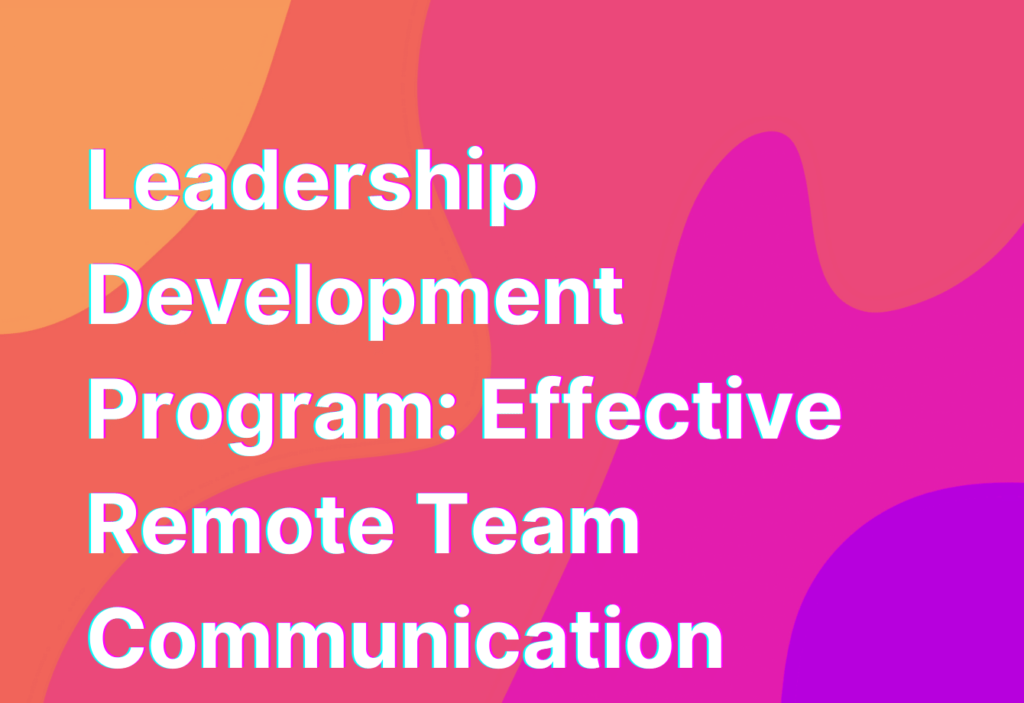Leadership Development Program: Effective Remote Team Communication
Hey there, remote work enthusiasts! It’s Ashley here, your go-to gal for all things remote work. Today, I want to talk about the importance of effective communication in remote teams and how a leadership development program can help foster better collaboration. So grab your favorite cup of coffee (or tea, if that’s your thing) and let’s dive in!
The Power of Communication in Remote Teams
Communication is the lifeblood of any team, whether they’re working in the same office or spread across different time zones. But when it comes to remote teams, effective communication becomes even more crucial. Without face-to-face interactions, it’s easy for miscommunications to happen and for team members to feel isolated.
That’s where a leadership development program comes in. By equipping leaders with the skills and tools to facilitate clear and open communication, remote teams can thrive and achieve their goals. Let’s explore some key strategies that can be incorporated into such a program.
1. Embrace Technology
In today’s digital age, there’s no shortage of tools and platforms designed to enhance remote team communication. From project management software like Trello and Asana to video conferencing tools like Zoom and Microsoft Teams, technology can bridge the gap between team members and foster collaboration.
By incorporating training on these tools into a leadership development program, leaders can ensure that their team members are equipped with the knowledge and skills to effectively utilize them. This not only improves communication but also boosts productivity and efficiency.
2. Foster a Culture of Transparency
Transparency is key in remote teams. When team members are aware of each other’s progress, challenges, and successes, it fosters trust and collaboration. Leaders can play a crucial role in creating a culture of transparency by setting the example and encouraging open communication.
Through the leadership development program, leaders can learn how to effectively share information, provide regular updates, and encourage team members to do the same. This creates a sense of unity and ensures that everyone is on the same page.
3. Encourage Regular Check-Ins
In remote teams, it’s easy for team members to feel disconnected and isolated. Regular check-ins can help bridge this gap and ensure that everyone feels supported and heard. These check-ins can take the form of one-on-one meetings, team meetings, or even informal virtual coffee chats.
Leadership development programs can provide leaders with the skills to conduct effective check-ins, including active listening, providing constructive feedback, and addressing any concerns or challenges team members may be facing. This helps build strong relationships and promotes a sense of belonging within the team.
4. Promote Multicultural Understanding
In today’s globalized world, remote teams often consist of members from different cultural backgrounds. This diversity can bring unique perspectives and ideas to the table, but it can also lead to misunderstandings if not properly managed.
Leadership development programs should include training on multicultural understanding and communication. This can help leaders navigate cultural differences, promote inclusivity, and ensure that everyone feels valued and respected. For more information on effective communication in multicultural remote teams, check out this link.
Wrapping Up
Effective communication is the backbone of successful remote teams. By investing in a leadership development program that focuses on communication strategies, embracing technology, fostering transparency, encouraging regular check-ins, and promoting multicultural understanding, leaders can create a thriving remote team that achieves its goals and fosters a sense of belonging. So, what are you waiting for? Start developing your leadership skills and watch your remote team flourish!


